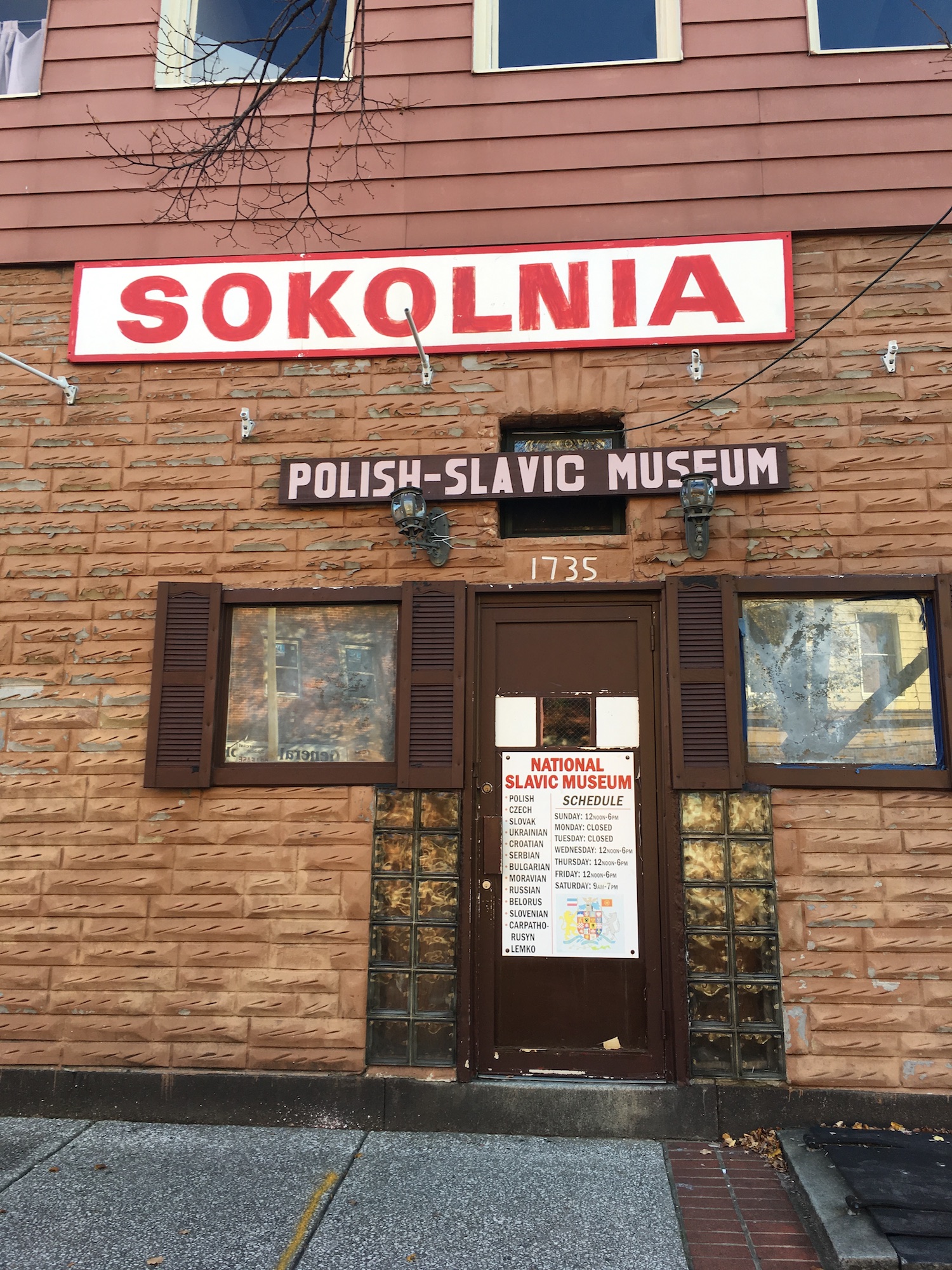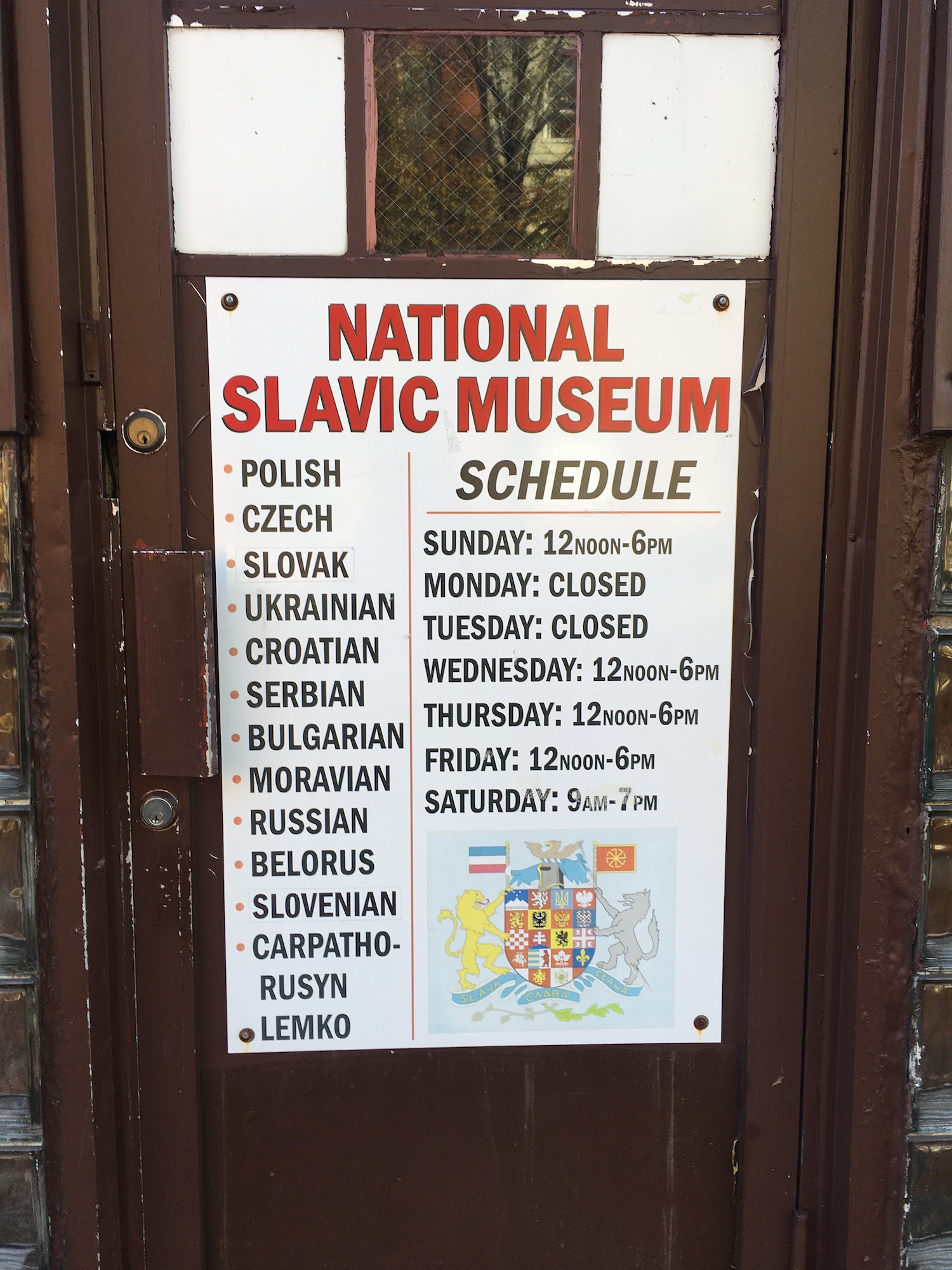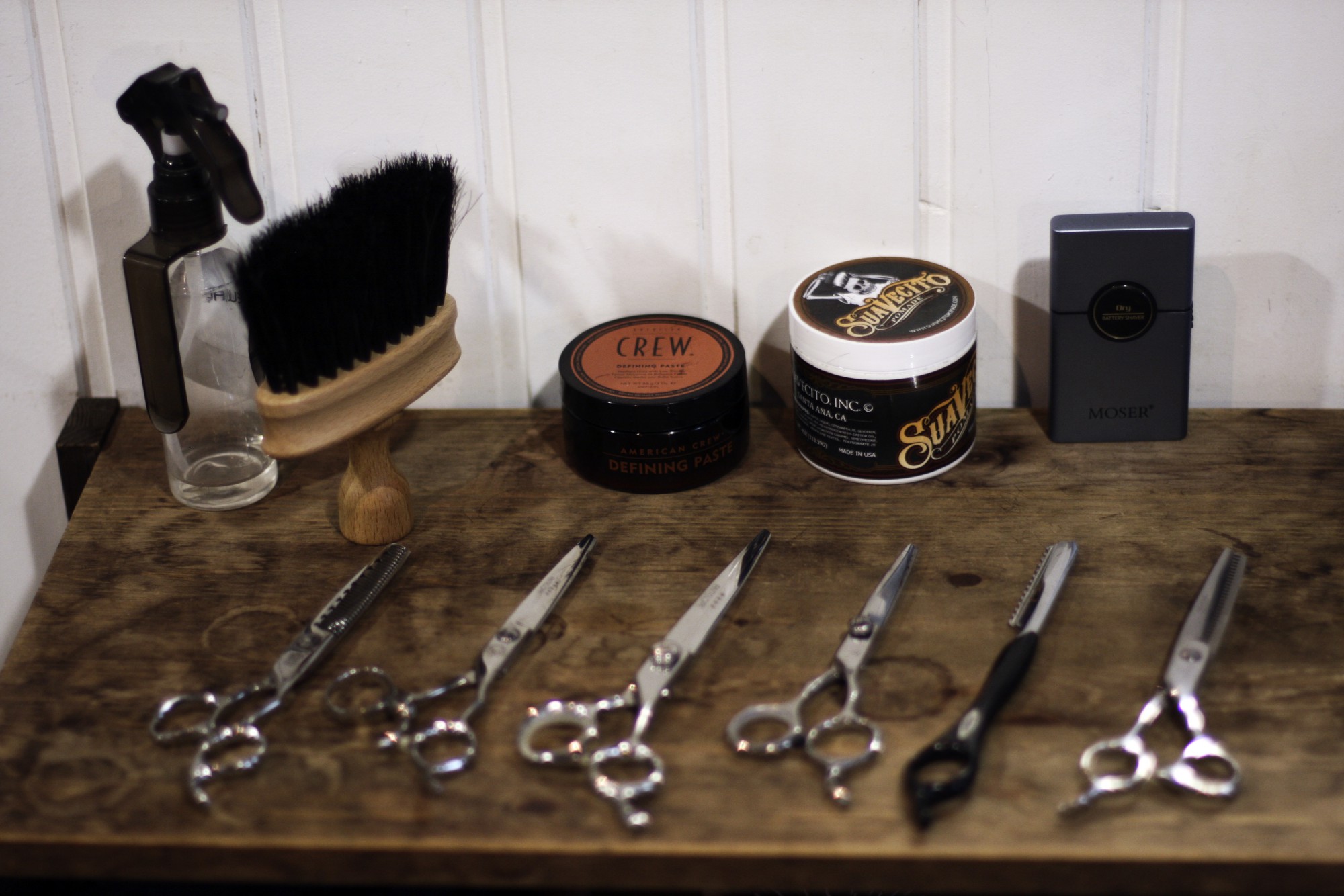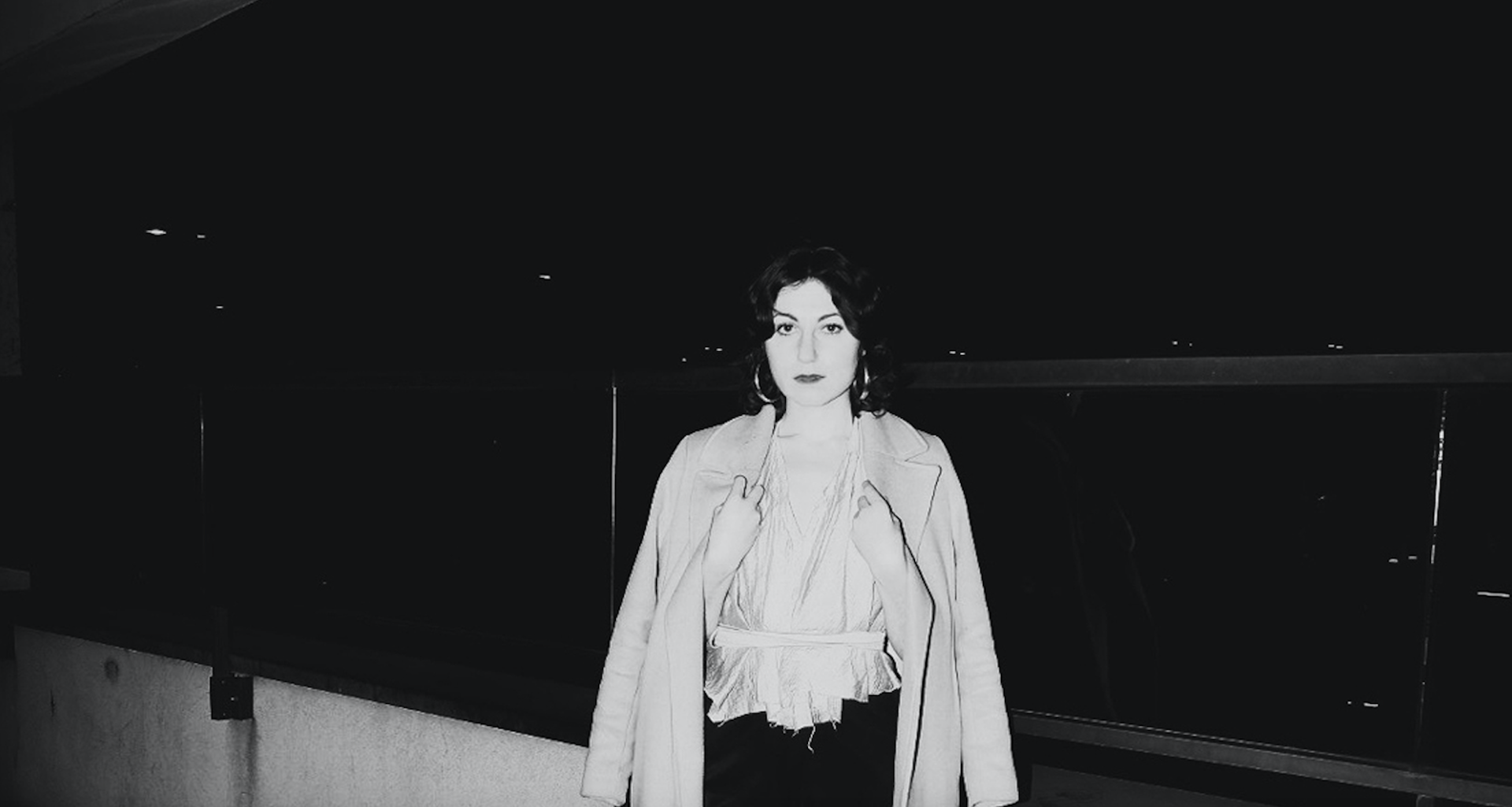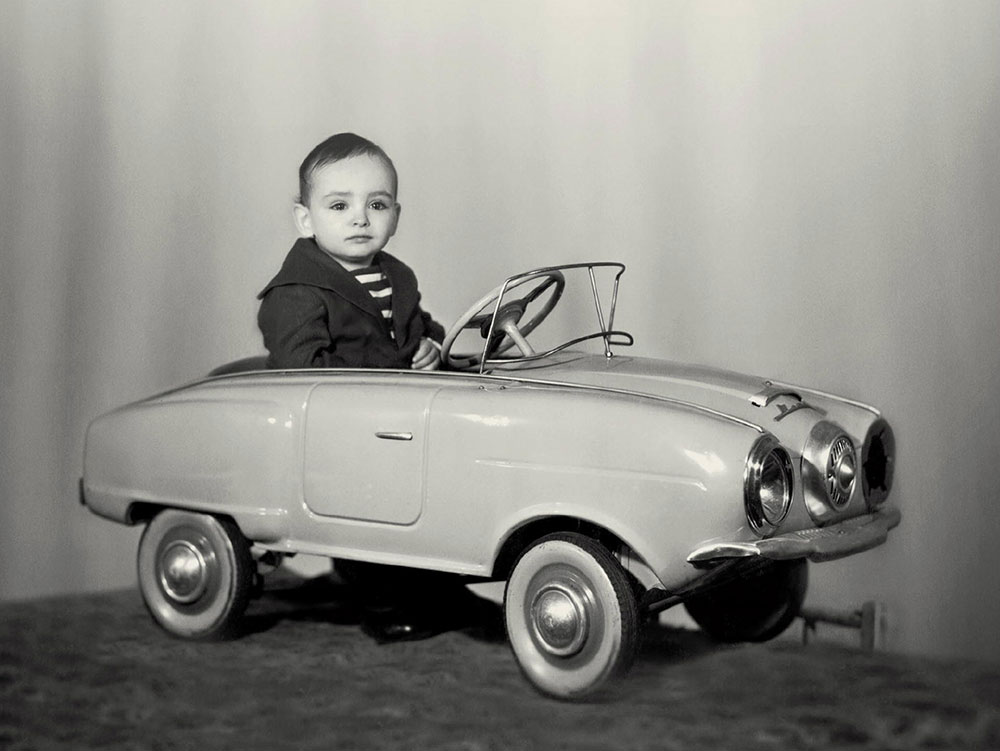Searching for traces of Eastern Europe on a walking tour of Baltimore
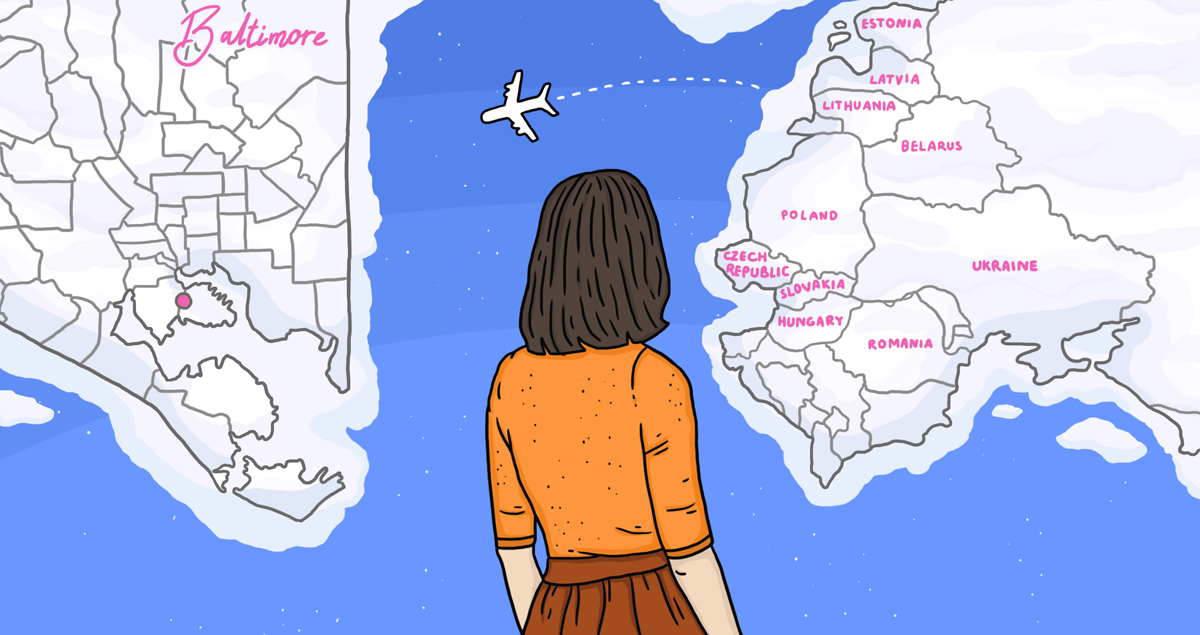
During the 1930s, Russians were Baltimore's largest migrant group. Over the years, Belarusians, Bulgarians, Czechs, and Slovaks all moved to the city. Today, Polish names adorn the sides of older buildings. But how have these arrivals shaped their adopted home and its communities?
When you’re a perpetual expatriate, moving continuously from place to place, nostalgia becomes a way of life.
As soon as you’re reunited with one location you long for another, and so you keep moving, hoping that you’ll locate a feeling that allows you relive a lost chapter, a tiny slice of your own life that brings a particular rush of sensations.
I kept moving throughout nearly all of my young adult life, mostly to places like Vranje, Serbia, and Tbilisi, Georgia. I had a longstanding interest in the region that started in college, and I purposefully continue to study the region and look for jobs there. I traveled to Lithuania and Ukraine, to Belarus and Bosnia and Herzegovina, to Bulgaria and Armenia, to Abkhazia and Kosovo, and to so many other places in that part of the world loosely defined as Eastern Europe. Gradually, that region became more familiar to me than my own home, the United States, a place where I was convinced I would never return. Until one day I did.
After nearly a decade of wandering, I ended up in Baltimore, Maryland, the historic Eastern port city where my mother’s ancestors settled when they first arrived in the United States. That was how, fueled by nostalgia and a desire for something comforting and familiar, I found myself walking the leaf-covered streets of Baltimore looking for traces of Eastern Europe.
Fells Point neighborhood in southern Baltimore
For centuries, Baltimore was a city of immigrants, and its history tells a tale about how people from around the world became American.
One of the most overlooked parts of the city’s history is the influence of Eastern European immigrants. Like New York, Baltimore has neighbourhoods that were historically known as “Little Poland” and “Little Ukraine.” Belarusians, Bulgarians, Czechs and Russians all moved to Baltimore and helped build the city’s institutions. Russians were Baltimore’s largest foreign-born community in the 1930s. Today, there are still Polish bakeries and delis, and Polish names adorn the sides of older buildings.
View over Baltimore
In the United States, Baltimore has a reputation for its high homicide rate. The television series The Wire, popular in the early 2000s, was written by a reporter covering West Baltimore’s drug trade and resulting violence. It’s the city’s murder rate that most often comes to mind when people think of Baltimore.
As a result, the city is developing at a much slower rate than other east coast cities of a comparable size. While housing prices in places like Washington D.C. and Philadelphia skyrocket due to high demand, Baltimore is estimated to have around 17,000 vacant buildings. The city’s population has also declined in the wake of widespread protests against police violence in 2015.
Still, not every Baltimore neighborhood is the same. Economists and social justice advocates point out that while majority Black neighbourhoods in East and West Baltimore lack investment and opportunity, the North and South of the city continue to prosper by comparison. The Fells Point neighbourhood in southern Baltimore, for example, is a popular tourist destination. It’s there that much of the city’s Eastern European history is found.
Kosciuszko Federal Savings Bank
Walking along Eastern Avenue in the Fells Point neighborhood, a touristy area near the waterfront in south Baltimore, I find the Kosciuszko Federal Savings Bank. It’s right across the street from the old Obywatelski Zwiazek Budowniczy, the Civic Builders’ Union, which today appears to be an electronics store.
Some digging in the University of Baltimore archives shows me that a man named Tadeusz Kosciuszko started his own literary society in Baltimore’s Curtis Bay neighbourhood as early as 1903. The society’s financial statements, hand-written in Polish, have been digitalised.
These pieces of history pique my interest, and I decide that the best place to find more information about Baltimore’s Eastern European history is in the city’s National Slavic Museum, located on Fleet Street, just one block south of Eastern Avenue. The museum is just west of Patterson Park, the area formerly known as Little Ukraine.
The museum was closed the first time I arrived. But next door is a Polish bakery named Krakus, so I decided to go in and poke around. Perhaps the people working at the deli will know more about the museum.
Inside are stacks of Polish magazines featuring President Andrzej Duda on their covers. There are shelves of canned chopped pork. A man walks in and chats with the woman behind the counter in Polish.
“There’s never anyone in the museum,” she tells me.
After a bit of sleuthing I discover a phone number for the museum and arrange to meet the owners. A few hours later, I arrive at Lemko House apartment complex on South Ann Street, just a block from the Slavic Museum. The building is named after the ethnic group of its founder, Father Ivan Dornic, a priest of the Eastern Rite denomination.
National Slavic Museum
The Lemkos are an ethnic group from Transcarpathia, a region south of the Carpathian Mountains in a part of Ukraine that borders Hungary, Slovakia, and Romania.
Lemko House, however, looks like a typical apartment building. A woman behind a counter buzzes me in. It smells like old carpet and stale cigarette smoke.
Violet Sedlacek tells me that Lemko House was built in 1983 to house immigrants from Eastern Europe. Sedlacek’s own father escaped Slovakia in 1949 following the coup that brought the communists to power. The family arrived in Baltimore from Germany in 1954, when Violet was two and a half years old.
“I was a refugee baby,” she says proudly.
Lemko House eventually opened its doors to low-income residents of other ethnicities. But it’s clear that many Eastern Europeans still live there. A jovial elderly couple dressed in fur enters the building shortly after I do, speaking animatedly in Russian. We make small talk in the elevator as I head to the 6th floor to see the view from the roof.
Ivanna Zhyzko, from Lviv, Ukraine, wants me to see the Eastern European churches visible from Lemko House’s roof. We climb into the crisp autumn air and see the view of Baltimore’s port. To the east, I see the golden onion domes of St. Michael’s Ukrainian Orthodox Church, just a ten-minute walk away in a neighbourhood called Canton.
Violet and Ivanna tell me stories about what Baltimore was once like for its bustling Eastern European community. The Ukrainians, Poles, Russians, and Slovaks all socialised together, building churches and social clubs for their growing community. They spent evenings dancing polka. In August 1980, Father Dornic organized a Slavic-American National Convention in Baltimore. It lasted for four days and included Croatian folk dancing, Belarusian singing, and workshops on community development, human rights, and Slavic relations.
She says that Polish immigrants and their descendants come from as far away as Pennsylvania to buy her food
But today, most of the social clubs are closed. Only the Polish Home Club in Fells Point is still running, and it’s only open during the weekends. Baltimore’s Eastern European community is desperately lacking funds to support their cultural activities, the women tell me.
Eventually Ivanna takes me to the National Slavic Museum to show me around. It was the brainchild of Father Dornic, who purchased an old Polish social club and transformed it into a museum. But just six years after it first opened its doors, the museum is closed semi-permanently. The exhibitions on Belarus, North Macedonia, Serbia, Ukraine, Slovakia, Poland, Russia and a handful of other countries lie in disarray on the shelves.
“It’s closed because of money,” Ivanna admits. “We don’t have a penny. We can’t pay for heat or air conditioning, or for a person to man the desk.”
Fells Point neighbourhood
Still, she says the community at Lemko House is determined to document its history and culture. “Here, we are all American,” she says. “But we need more museums and fewer guns.”
In a country of immigrants, it’s common for second and third generation Americans to forget key aspects of their ancestors’ culture, like language, literature, and dance. The founders of the Slavic museum want younger generations to enjoy the things that marked their lives and those of previous generations.
Just down the street, however, I find evidence of a thriving Eastern European business. Sophia’s Place is a deli in Broadway market, which recently opened in a new location in Fell’s Point. The market looks like any other hipster food court erected near a popular tourist destination. There are food stalls and brightly colored stools for people to sit and guzzle craft beer.
Fells Point, Broadway Market. Image: Wally Gobetz under a CC licence
But Sophia’s Place stands out. The women behind the counter are speaking in Polish, and unlike the rest of the employees in the market, they don’t look like they’re trying too hard to be hip.
The groceries on the stands at Sophia’s, from the Mieszanka Krakowska chocolate to the packets of dried Zupa Borowikowa, are the same commonplace items I found one freezing November I spent in Torun, Poland ten years ago. There are poppy seed rolls and paczki, Poland’s famous jelly donuts. There is dried meat and sausage. There are ten kinds of pierogis. To my delight, they’re the frozen kind that you can buy in bulk and make at home.
Sophia, 75, opened Sophia’s Place when she arrived in Baltimore 35 years ago. Originally from Zakopane, a resort town in southern Poland near the Tatras Mountains, Sophia immigrated to New York in the early 1980s and settled in Brooklyn.
But a few years later she decided to move to Baltimore to join a friend who she knew from Poland. Now she says that Polish immigrants and their descendants come from as far away as Pennsylvania to buy her food, and the local college students like the pierogies.
Polish delicacies
“Lots of the people who come here feel homesick, especially around the holidays,” Sophia tells me. “They want their traditional food.”
Nostalgia is often triggered by sensory experiences like eating, which evoke familiar tastes and smells. For me, there’s nothing quite like a potato-filled pierogi to transport me back to late night meals with friends.
What’s clear is that Baltimore’s Polish community has made a mark on the city. A ten-minute walk west of Sophia’s I find the National Katyn Memorial. In 1940, during the beginning of the Second World War, an estimated 20,000 Polish army officers and personnel were murdered in Russia’s Katyn forest by Soviet dictator Josef Stalin’s NKVD.
The Soviets blamed Nazi Germany for the Poles’ disappearance. It wasn’t until 1992 that Russia released documents showing that the Soviet Union had ordered the killings. The events were depicted in the acclaimed Polish director Andrzej Wajda’s 2007 film Katyn, which portrays the fearful moment when Polish soldiers realize that they are about to be shot and buried in a mass grave.
Baltimore’s memorial to the victims is a towering gold structure with statues of Polish soldiers with their heads bowed and their arms tied behind their backs. The names of the victims are etched into plaques nearby.
